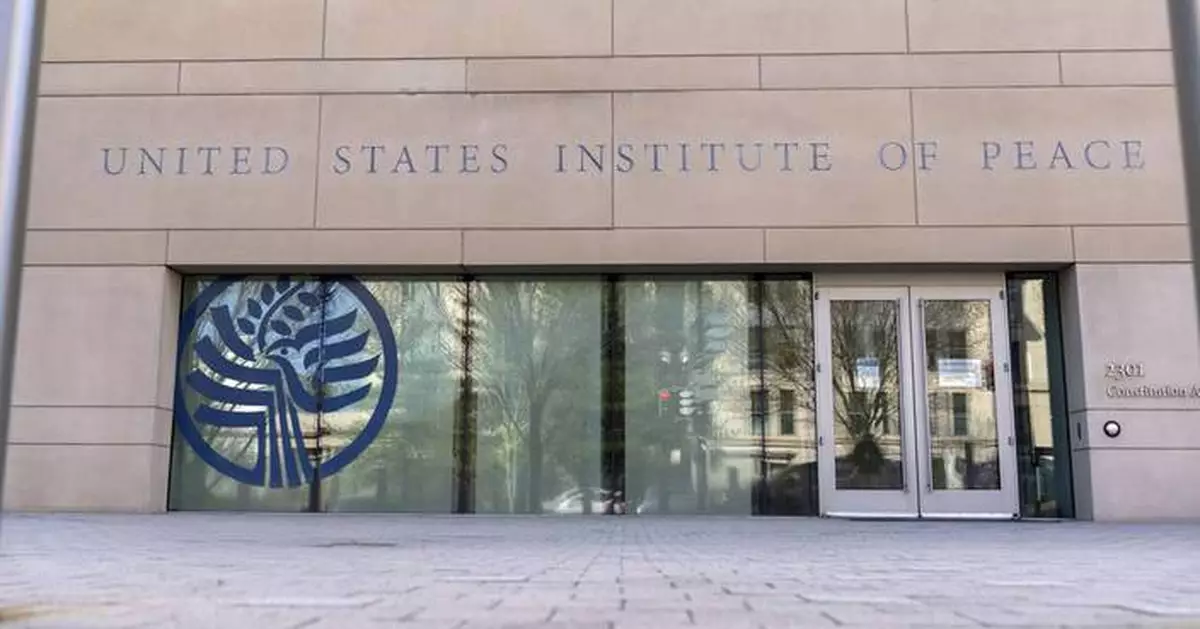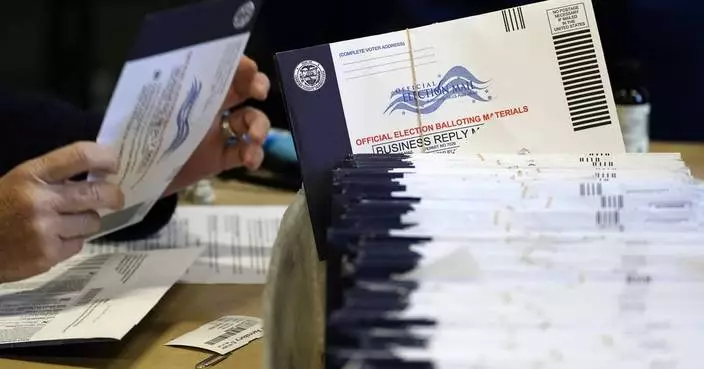WASHINGTON (AP) — An official allied with Elon Musk's Department of Government Efficiency has been put in charge of the U.S. Institute of Peace, a congressionally created and funded think tank targeted by President Donald Trump for closure, according to a federal court filing Monday.
Two board members of the Institute of Peace have authorized replacing its temporary president with Nate Cavanaugh, the filing says. They ordered him, it says, to transfer the institute's property to the General Services Administration, the federal government's real estate manager, which is terminating hundreds of leases at DOGE's behest.
Click to Gallery
A no trespassing sign is posted on a door at the headquarters of the United States Institute of Peace, Tuesday, March 18, 2025, in Washington. (AP Photo/Mark Schiefelbein).
People stand outside the headquarters of the United States Institute of Peace, Tuesday, March 18, 2025, in Washington. (AP Photo/Mark Schiefelbein).
The United State Institute of Peace building is seen, Monday, March 17, 2025, in Washington. (AP Photo/Jose Luis Magana)
The headquarters of the United States Institute of Peace are seen Tuesday, March 18, 2025, in Washington. (AP Photo/Mark Schiefelbein).
The United State Institute of Peace building is seen, Monday, March 17, 2025, in Washington. (AP Photo/Jose Luis Magana)
The United State Institute of Peace building is seen, Monday, March 17, 2025, in Washington. (AP Photo/Jose Luis Magana)
The court filing asks U.S. District Judge Beryl Howell in Washington to stop the action or schedule a status conference to address the issues as soon as “practicable.” Howell ordered the parties in the case to appear before her Tuesday for a status hearing.
In a motion opposing the request, lawyers for the defendants argued that Howell had denied an earlier request by the plaintiffs for provisional relief. "The Court's order allowed the Institute's new leadership to perform their duties, including complying with the President's Executive Order, and the United States remains under no judicial command to halt its activities in that regard. Plaintiffs now complain that the Institute and its new leadership are taking those very steps to implement the President's Executive Order."
The action follows a Friday night mass firing of nearly all of the institute's 300 employees. Former employees say only a small number did not get notification, including colleagues who are abroad, who were given until April 9 to return to the U.S., and the regional vice presidents, who direct the areas where they are based.
Two former employees, who spoke to The Associated Press on the condition of anonymity for fear of retribution, said they were reached by private emails because they have been locked out of the institute's system and were not able to return to work since a tense standoff earlier this month in which DOGE members were accompanied by law enforcement. They were given until April 7 to clear out their personal effects.
An executive order from the Republican president in February listed the institute, which seeks to prevent and resolve conflicts, and three other agencies for closure. Board members, who are nominated by the president and confirmed by the Senate, and the institute’s president were fired. Later, there was a standoff between employees who blocked DOGE members from entering the institute’s headquarters near the State Department. DOGE staff gained access in part with the help of the Washington police.
Howell chastised DOGE representatives for their behavior but did not reinstate the board members or allow employees to return to the workspace.
The court filing by plaintiffs acknowledges Howell's previous actions denying a temporary restraining order. “They seek relief now simply to preserve the status quo with regard to the Court's jurisdiction to grant relief if it determines that the removal of a vast majority of the Institute's directors was unlawful,” it says.
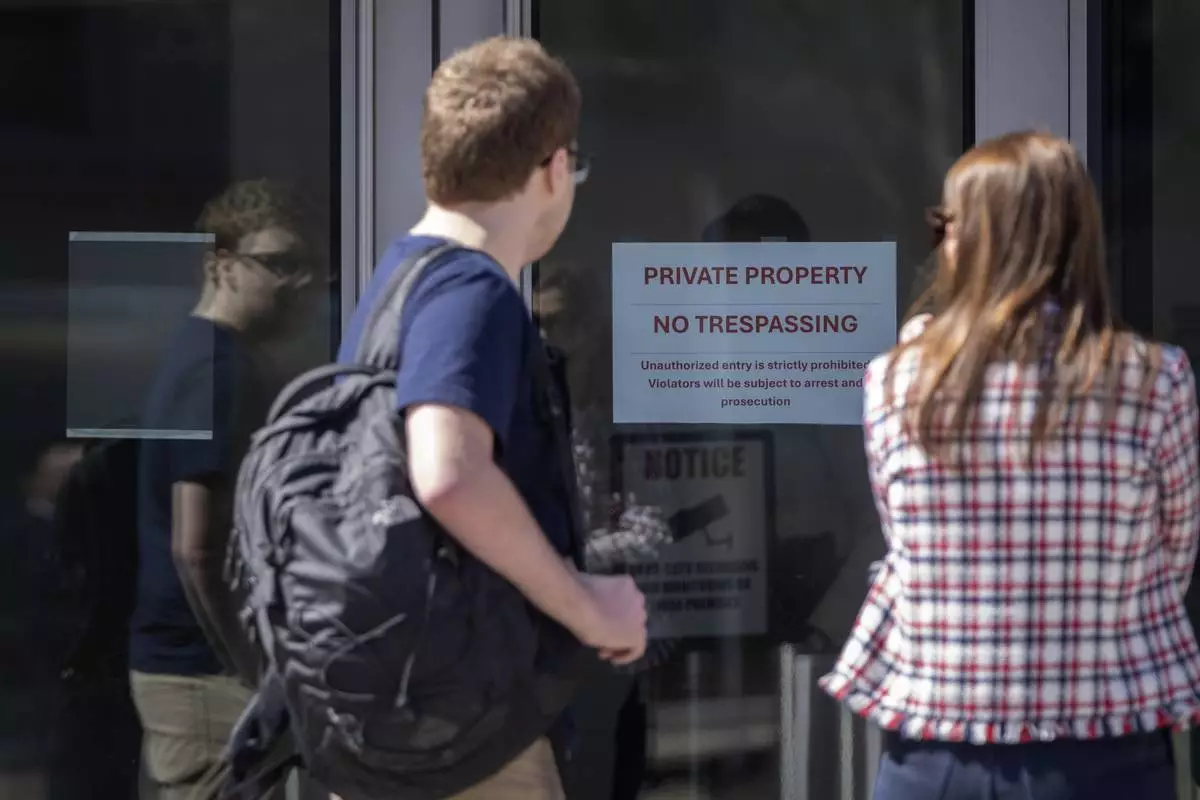
A no trespassing sign is posted on a door at the headquarters of the United States Institute of Peace, Tuesday, March 18, 2025, in Washington. (AP Photo/Mark Schiefelbein).
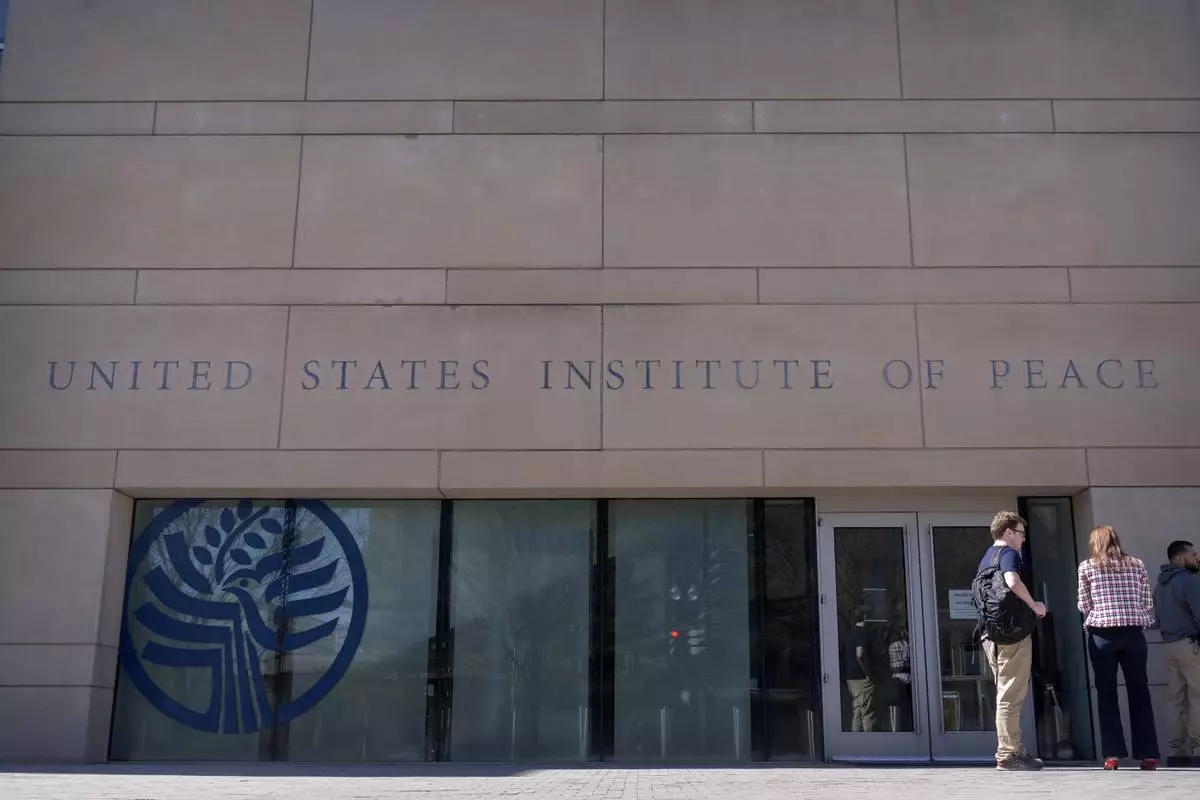
People stand outside the headquarters of the United States Institute of Peace, Tuesday, March 18, 2025, in Washington. (AP Photo/Mark Schiefelbein).
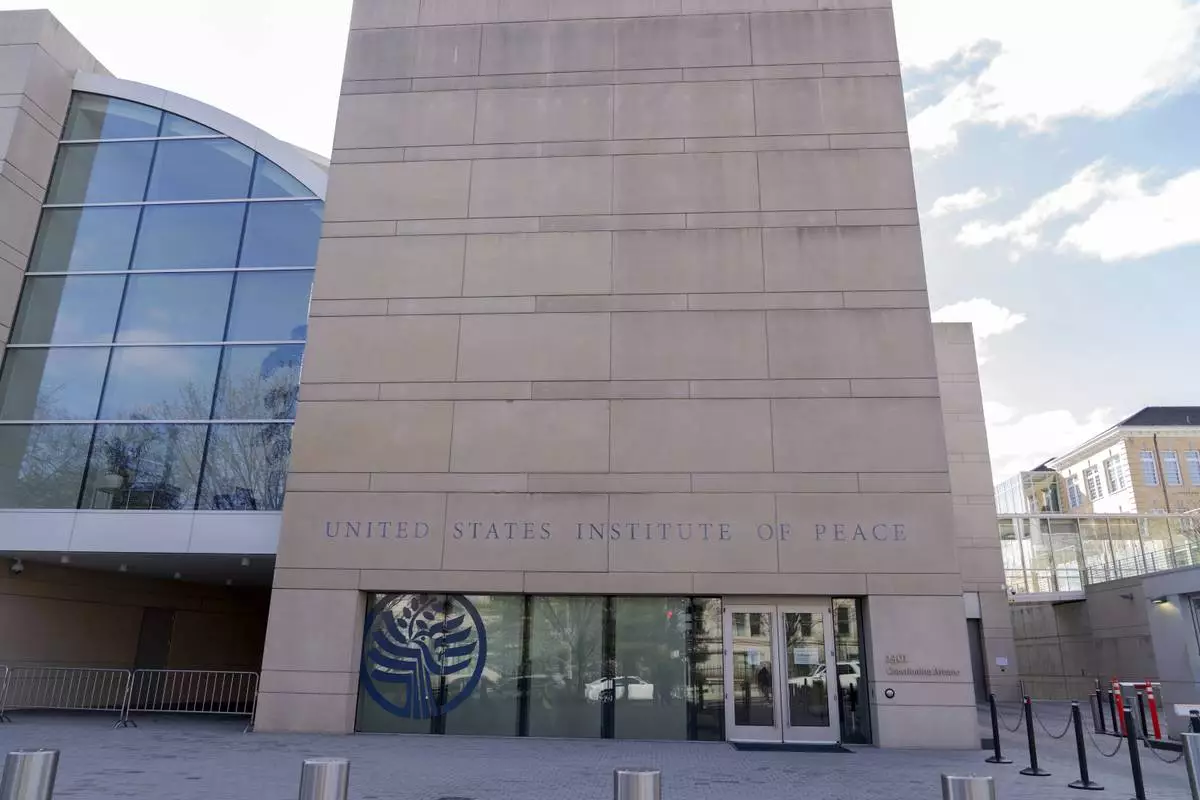
The United State Institute of Peace building is seen, Monday, March 17, 2025, in Washington. (AP Photo/Jose Luis Magana)
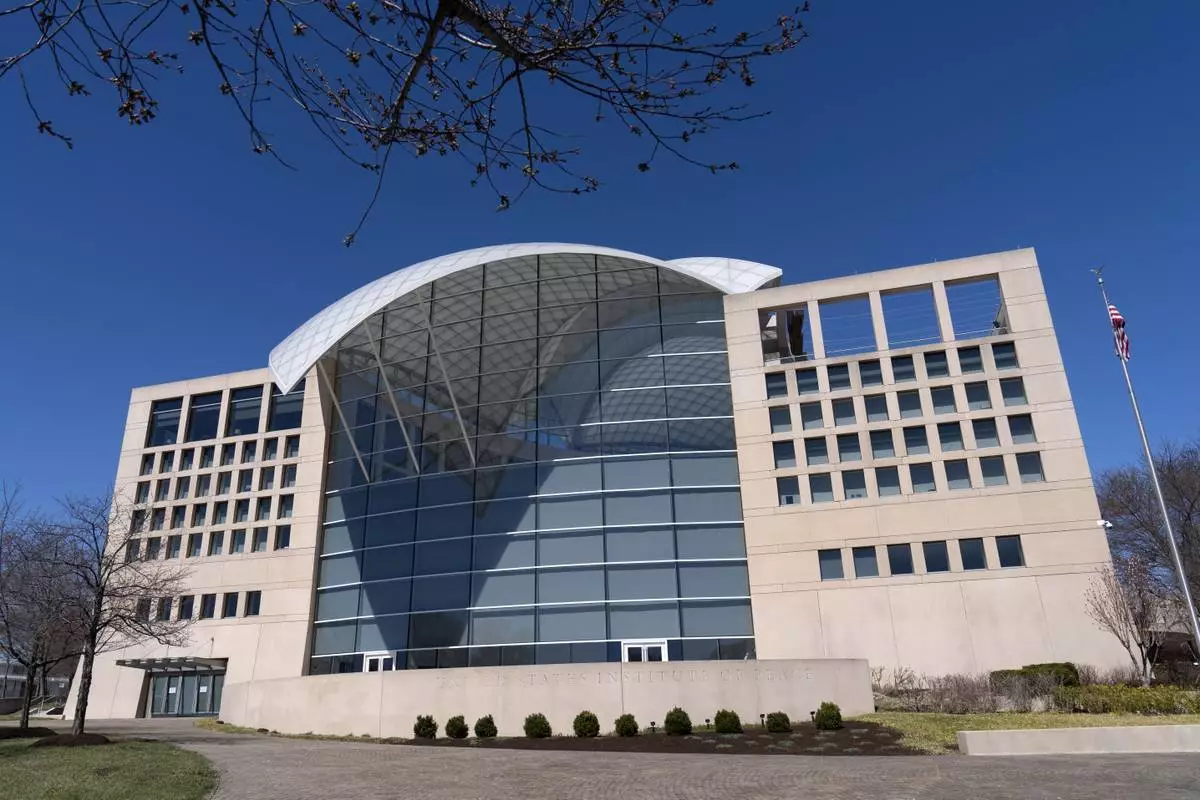
The headquarters of the United States Institute of Peace are seen Tuesday, March 18, 2025, in Washington. (AP Photo/Mark Schiefelbein).
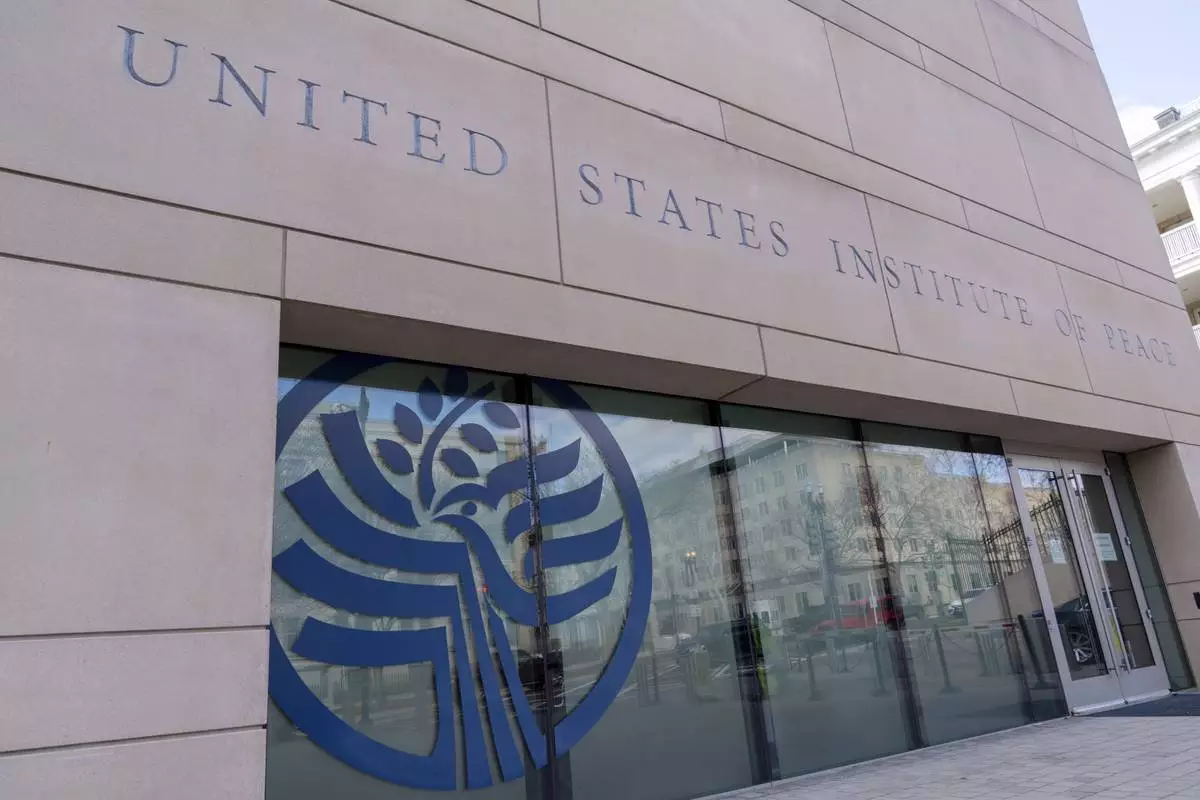
The United State Institute of Peace building is seen, Monday, March 17, 2025, in Washington. (AP Photo/Jose Luis Magana)

The United State Institute of Peace building is seen, Monday, March 17, 2025, in Washington. (AP Photo/Jose Luis Magana)
WASHINGTON (AP) — The Senate dived into contentious debate Friday on a budget plan critical to Republican efforts to pass trillions of dollars in tax cuts and boost border security and defense spending through what President Donald Trump calls “one big beautiful bill.”
Passage of the plan would give Republicans the chance in coming months to muscle a tax cut bill through both chambers of Congress even if Democrats are unanimously opposed, just as they did in Trump's first term.
Democrats are intent on making the effort as politically painful as possible, beginning with all-night votes on dozens of proposals that GOP senators will have to defend before next year’s mid-term elections, including on Trump’s tariff policies and the administration’s efforts to shrink the federal government.
Republicans are framing their work as preventing a tax increase for most American families. Unless Congress acts, the individual and estate tax cuts that Republicans passed in 2017 will expire at the end of this year.
“Republicans believe fundamentally that Americans know best what to do with their money,” said Senate Majority Leader John Thune, R-S.D.
Democrats accused Republicans of laying the groundwork for increasing deficits and cutting key safety net programs such as Medicaid and nutritional assistance to help pay for tax cuts they say disproportionately benefit the wealthy.
“The investments that affect America's future are hanging by a thread, and Republicans are about to cut it," said Senate Democratic leader Chuck Schumer of New York.
The debate early Friday was generally one-sided. Senate Democrats are taking full advantage of 25 hours of their available debate time, while Republicans yielded much of theirs in order to get to an all-night voting frenzy referred to as a vote-a-rama. Once lawmakers have exhausted their list of amendments and themselves, they'll move to a final vote on the plan itself, most likely sometime Saturday morning.
The Senate is expected to approve the measure. The House will also have to pass it to unlock the process that Republicans can use to pass legislation with a simple majority and avoid a Democratic filibuster.
And that's just the beginning.
Developing a final bill will take weeks, if not months, with the GOP leadership and Trump needing virtually every Republican vote to get a package over the finish line. The GOP leaders will confront concerns from fiscal hawks in deep red states and congressional districts who want trillions of dollars in spending cuts to help pay for the tax breaks. And they will confront dozens of lawmakers in swing districts and states worried about what those cuts will mean for their constituents, and their reelection chances.
It will be a delicate task with no guarantee of success, particularly as economic gyrations from Trump's tariff policies test his ability to keep Republicans united.
The Senate’s budget plan allows for extending the individual and estate tax cuts under a scoring method that treats them as not adding to future deficits, even though the Congressional Budget Office has projected the extension would cost more than $3.8 trillion over 10 years, not including higher interest payments.
On top of that, the budget plan instructs the Senate Finance Committee to expand deficits by up to $1.5 trillion more over that same timeframe. That would give senators room to include some of Trump’s campaign promises, such as no tax on tips, Social Security benefits and overtime. Republicans are also looking to increase the $10,000 deduction for state and local taxes, something that lawmakers from states such as New York, California and New Jersey say is necessary to get their support.
The budget plan also allows the Senate to increase the debt ceiling by up to $5 trillion. Final approval of such an increase would allow the federal government to continue to finance its debts and push any further votes on the matter until after next year’s mid-term elections. Trump is wary of giving Democrats the chance to extract concessions on a debt ceiling vote.
The plan also instructs four Senate committees to find at least $1 billion each in budget reductions. That's just a small fraction of the more than $5 trillion in potential tax relief. But the leadership is emphasizing that the instructions purposefully set a low floor for spending cuts to provide maximum flexibility and that committees will be on the hunt for far more.
Committees are also given authority to pursue as much as $521 billion to boost border security, defense and the Coast Guard, though Budget Committee Chairman Lindsey Graham, R-S.C., has said the final spending total will be closer to $345 billion.
The House budget plan provided for $4.5 trillion in tax breaks over 10 years, though the amount for tax breaks would shrink if the spending cut totals don't get to $2 trillion in savings.
The GOP leadership has encouraged members to just get a budget plan over the finish line, saying they have time to work out the tough questions of which tax breaks and spending cuts to include.
Throughout the debate, Democratic have focused on framing the tax cuts as helping out the wealthiest at the expense of average Americans. Sen. Jeff Merkley, the lead Democrat on the Senate Budget Committee, spoke with a sign behind him that read “Republican Plan: Families Lose, Billionaires Win.”
“That's a terrible plan,” Merkley said.
Extending the the 2017 breaks would cut taxes for about three-quarters of households but raise them for about 10 percent. In 2027, about 45% of the benefit of all the tax cuts would go to those making roughly $450,000 or more, according to the Urban-Brookings Tax Policy Center, which analyzes tax issues.
Sen. John Barrasso, the No.-2 ranking GOP senator, said voters gave Republicans a mission and a mandate in November, and the Senate budget plan delivers.
“It fulfills our promises to secure the border, to rebuild our economy and to restore peace through strength,” Barrasso said.

President Donald Trump waves as he arrives at the Trump International Golf Club, Friday, April 4, 2025, in West Palm Beach, Fla. (AP Photo/Alex Brandon)








